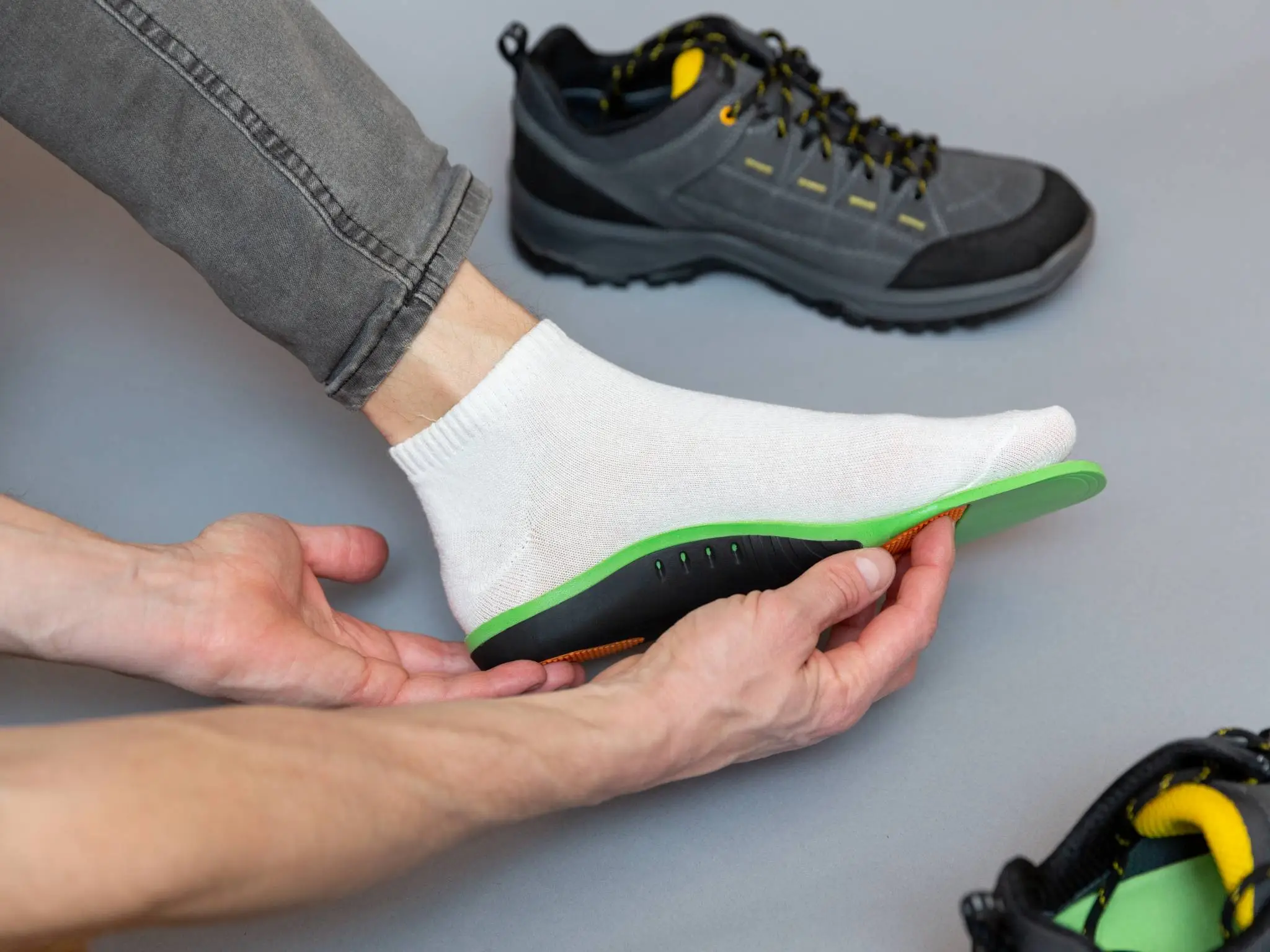If you’ve been diagnosed with osteoarthritis or bunions or are recovering from an accident, you may have heard about the benefits of custom orthotics. These are devices created to align your foot and ankle in a position that is anatomically efficient so that you can move without pain.
What are custom orthotics?
Custom orthotics are biomechanical medical appliances that look like insoles. Biomechanics is the study of the body, the forces exerted by our muscles and gravity’s effect on the skeletal structure as a whole (which is why orthotics are considered biomechanical). Custom orthotics are used to reduce the strain on the body that occurs when our feet are misaligned. Orthotics realign each foot by diverting and decreasing the motions that are involved during the gait cycle (the sequence of activities when one foot touches the ground followed by the other to create movement). Because these orthotics are customized, they are made to correct the particular issues with the feet of the individual they are being created for.
You can have three types of custom orthotics created:
- Functional: This type of custom orthotic is created to place the feet into more desirable positions so that the body can bear its own weight in order to properly move in a way that is least harmful. Functional orthotics are made of rigid or semi-rigid materials.
- Accommodative: An accommodative orthotic is designed to relieve stress from arthritic conditions that put pressure on the joints and render the foot somewhat immovable. This type of orthotic is made of flexible or semi-flexible materials.
- Therapeutic: If you have irregularly shaped feet, this is the orthotic type for you because it is designed to assist with stability, arch and heel support, and forward movement.
Because customized orthotics are made of exact imprints of your feet, you shouldn’t have trouble putting them into your shoes. Moreover, you won’t feel them when you walk, but you will feel the benefits of putting less stress on your joints and a stable gait.
A multistep process is involved in creating custom orthotics.
Step 1: Casting
The first step is to cast your foot. For this, a physiotherapist will thoroughly examine your feet. A physiotherapist is treats and diagnoses conditions of the feet, ankle and related leg structures. During the foot exam, detailed measurements of your feet will be recorded. Your shoes will also be examined and you will be asked questions regarding your lifestyle to determine how active you are. Plaster casting is one method of orthotic creation, using a cast of your feet. This is done in a non-weightbearing way when you are sitting or lying down. You need to be in a neutral position in order to ensure that the weight of your body is not putting stress on your feet; otherwise the cast will be inaccurate. The cast itself is made of wet plaster strips that are wrapped around your foot. You will not be able to move for the 5-10 minutes it takes for the plaster to harden. Once the plaster is set, the cast will be removed from your feet and stored for 24 hours before being sent off to a lab that specializes in creating custom orthotics.
Step 2: Manufacturing
The physiotherapist will send your cast along with a prescription detailing the materials, dimensions and accessories that need to be used in the creation of your orthotics to an orthotics lab. Once at the lab, specialists will review your prescription and begin the manufacturing process. At the lab, your cast is pressed against a sheet of plastic or graphite material under extreme heat. Then, a cover created from a comfortable yet stable material is secured to the arch structure and heel of the biomechanical device.
Step 3: Materials
Custom orthotic devices consist of rigid foundations and cushioning casing. To create the rigid foundations, materials like polypropylene (from the plastic family) or graphite are used because they are also quite flexible. The reason the materials need to be rigid with some flexibility is because they can resist the irregular injury-producing motions that you make with your feet without hurting you as you walk. Then, the cushioning materials are added. These materials can be made up of neoprene, silicone or ethylene-vinyl acetate. Once finished, the orthotic is sent back to your physiotherapist’s office for you to pick up.
How do I get custom orthotics made for my feet?
In order to get your own pair of custom orthotics, you may need a prescription. If you do not currently see a physiotherapist for your foot issues, you can get a referral from your general practitioner.
Custom orthotics cost more than traditional orthotics you can buy in a drugstore. However, having orthotics custom-fit to your feet is priceless. You’ll be able to walk and exercise without pain and live your life to the fullest. Contact us for more information about visiting our licensed physiotherapy clinic to discuss custom orthotics to correct misalignment problems with your feet.


